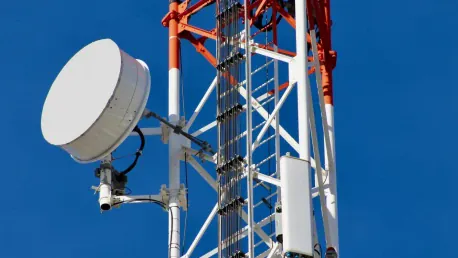SK Telecom, South Korea’s largest telecom operator, has reported a significant 10.5% year-over-year increase in its 5G subscriber base, rising to an impressive 16.57 million by the end of the third quarter. This growth marks a noteworthy milestone, as the carrier added nearly 400,000 new 5G subscribers during this period, with 5G users now representing 73% of its total handset subscribers, up from 65% the previous year. However, this surge in 5G adoption has been accompanied by a decline in LTE subscribers, which decreased by 19.3%, totaling 6.26 million. The company’s expansion in 5G technology underscores a broader shift in consumer preferences towards faster and more reliable networks.
Financial Performance and Subscriber Growth
Subscriber Dynamics and Mobile Market Position
SK Telecom ended the third quarter with a total of 34.27 million mobile subscribers, reflecting an annual growth of 1.8%. This increase in the subscriber base highlights the carrier’s ability to attract and retain new customers in a competitive market. The continued decline in LTE subscribers suggests a clear preference shift among users towards the advanced capabilities offered by 5G networks. The company’s focus on enhancing its network infrastructure and providing innovative services has played a crucial role in driving this growth.
Financially, SK Telecom experienced a 7.1% rise in operating profit, reaching KRW533.3 billion ($380.5 million) during the third quarter. This rise in profitability is indicative of the successful strategies implemented by the company to capitalize on the growing demand for 5G services. The increase in sales by 2.9% to KRW4.53 trillion further underscores the strong market performance. However, it is noteworthy that the net profit saw a decline of 9.1%, amounting to KRW280.2 billion. This reduction can be attributed to various factors, including increased expenditures and market dynamics affecting profitability.
Capital Expenditures and Strategic Investments
Over the past year, SK Telecom’s capital expenditures (capex) have risen by 3%, reaching KRW461 billion. These investments have been directed towards enhancing the company’s network infrastructure and expanding its 5G capabilities. The strategic allocation of funds has enabled SK Telecom to maintain a competitive edge in the fast-evolving telecommunications landscape. CFO Kim Yang-seob emphasized the company’s commitment to maximizing shareholder returns through strategic investments in both telecommunications and artificial intelligence (AI).
One of the key pillars of SK Telecom’s growth strategy involves the development of a nationwide AI infrastructure, referred to as the ‘AI Infrastructure Superhighway.’ This ambitious project aims to leverage Edge AI technology and GPUaaS to connect the entire country, thereby enhancing the delivery of AI-driven services. The emphasis on AI underscores the company’s vision to seamlessly integrate advanced technologies into its network, offering innovative solutions to meet the evolving needs of consumers and businesses alike.
AI Advancements and Future Plans
Personal Assistant Services and AI Innovations
SK Telecom’s AI personal assistant service, recently rebranded from ‘A.’ to ‘A. Phone,’ has made substantial strides in expanding its user base and capabilities. By the end of September, the service had surpassed 5.5 million users, highlighting its growing popularity among consumers. The functionality of the AI personal assistant has evolved significantly, transitioning from simple phone calls to include capabilities such as LLM searches. The incorporation of the ‘Multi LLM Agent’ has further enhanced the service’s AI capabilities, making it a versatile tool for various tasks.
In the broader AI domain, SK Telecom has introduced a new AI-driven personal assistant named Aster, designed specifically for a global audience. The introduction of Aster marks a strategic move to capture a wider market share and provide advanced AI solutions on a global scale. Aster is set for a closed beta launch in North America later this year, with a full-scale launch planned for 2025. The rollout of Aster underscores SK Telecom’s commitment to pushing the boundaries of AI technology and delivering innovative products that resonate with consumers worldwide.
Strategic Direction and Market Leadership
SK Telecom, South Korea’s largest telecom operator, has reported a significant 10.5% year-over-year increase in its 5G subscriber base, reaching an impressive 16.57 million by the end of the third quarter. This surge represents a remarkable milestone for the company, as it gained nearly 400,000 new 5G subscribers during this time. Now, 5G users constitute 73% of the carrier’s total handset subscribers, up significantly from 65% the previous year. This growth in 5G adoption, however, coincides with a notable decline in LTE subscribers, who decreased by 19.3% to a total of 6.26 million. The increasing preference for 5G technology highlights a broader consumer trend towards faster and more reliable networks. This shift underscores SK Telecom’s strategic focus on expanding 5G infrastructure to meet growing demand. The company’s ability to rapidly grow its 5G customer base while managing the decline in LTE users reflects changing market dynamics and consumer expectations in the telecommunications industry.









